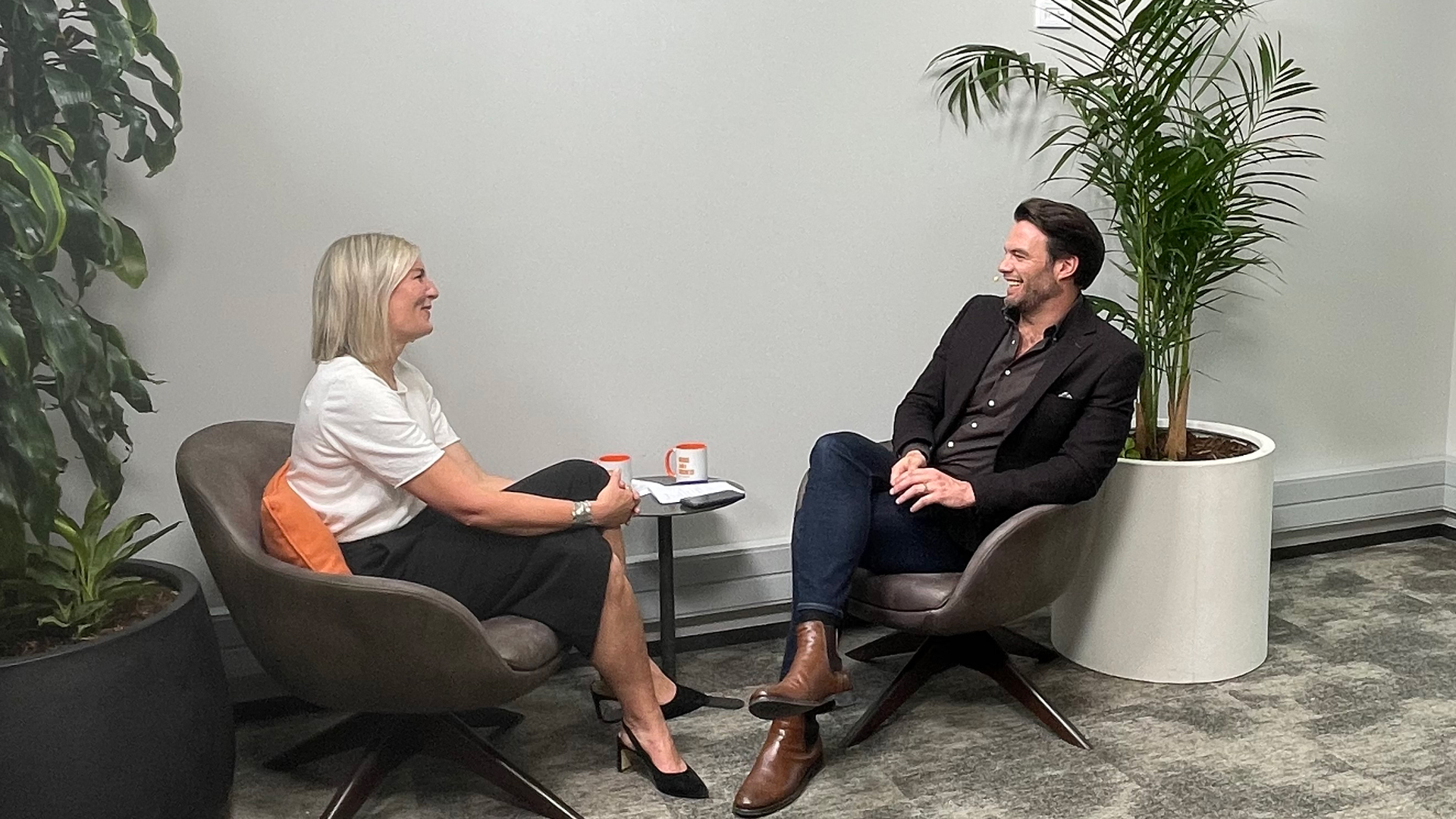While US tariff headlines have caused some volatility in the markets, certain shares – especially European – have outperformed. Milford Portfolio Manager Mark Riggall talks to Ryan Bridge about the strategy, aims, impacts and uncertainty of the ever-changing tariff landscape.
Listen.
Click here to download the MP3 file or listen to the podcast on your favourite platform:
Read.
Bridge talks Business: 11 February 2025
Episode Transcript
Ryan Bridge
Kia ora, I’m Ryan Bridge and welcome to Episode 20 of Bridge talks Business with Milford. Our feature interview today is with Mark Riggall from Milford. We’re talking all things Trump, tariffs, trade and what does it mean for the rest of us? Now it’s time for your top five business bits from the past seven days.
1. Trump whacks 25% tariffs on Mexico and Canada, only to postpone them a short while later. He has left 10% tariffs on China intact.
2. The US labour market remains robust according to the latest jobs data, with the unemployment rate falling back to 4% – which is the lowest level since May last year.
3. Meanwhile, US company earnings are driving large swings in individual stocks even as overall profits are continuing to rise at a solid clip.
4. In New Zealand, the labour market data showed a rise in the unemployment rates to 5.1% which was expected but still the highest level since 2020. The RBNZ is still likely to cut 0.5% to support the economy.
5. This week we continue the Trump tariff watch but also get the latest data on inflation and retail spending from the US.
All right, time to talk business. The Trump administration is set to complete its review of US trading partners by the end of March, after which we could see a more meaningful tariff policy enacted. Now Trump wants to raise revenue, cut taxes and slash spending – but there’s only so much his old mate Elon can cut outside of defence, entitlements and health. So, how does this puzzle fit together and what does it mean for us? Here to break it down is Mark Riggall from Milford. Just a reminder that this session is informational only and should not be considered financial advice. Mark, great to have you back.
Mark Riggall
Thanks, great to be here.
Ryan Bridge
Right, so it’s like trying to read tea leaves. What on earth is Donald Trump going to do? We have little drops of information on Air Force One, we haven’t quite got all of the detail yet. What are you picking?
Mark Riggall
Well that’s right, as investors we want certainty, right? We want to know what’s going to happen. Policy is an important part of the jigsaw puzzle of investing, and so with the little bits and pieces of information we’re getting we’re trying to piece together what the real policy is underneath all of these announcements.
Ryan Bridge
How do you think they’ll differ from the ones that he instituted in his first term?
Mark Riggall
It has to be said, this time around it looks like a lot more purposeful in terms of a strategy. Tariffs are front and centre of his approach, but they’re also an all-of-government policy. By that I mean he’s talking about integrating tariffs with other policies on trade and things that he wants other countries to do, and he’s using tariffs partly as a tool to try and achieve those.
Ryan Bridge
It’s not just about economics is it for him? It’s using this act from 1977 that talks about national crises, and he’s announced a number of those, so is it harder to pick who the targets might be?
Mark Riggall
I mean, he loves tariffs because they’re an executive action. He doesn’t need to pass it through congress, so he can get it done – he can issue an executive order in order to impose a tariff. But in terms of what he’s trying to achieve, I guess they’re threefold. Firstly, transactional, i.e. this is the negotiating tactic that he’s using. What does he want to see from another country in return for removing tariffs? Or using the threat of tariffs to try and drive behaviour from another country – so that’s one. The second one is restructuring global trade. He sees there’s some unfairness – the US consumer is the global consumer and a lot of other countries have access to that consumer. He wants to make sure that the US is front and center and treated fairly in that. And then the final one is he’s talked about using tariffs as a revenue source. Clearly the US runs a big budget deficit, they’re trying to reduce that deficit, and part of the ways they could do that would be to use some of the revenues from tariffs to reduce the deficit.
Ryan Bridge
What impact do they have – a tariff?
Mark Riggall
If we think about what a tariff does, it raises the cost of a particular good that’s being tariffed or of all the goods from a particular country that’s being tariffed, and so that raises the price of that good in the US. How much it goes up by, although, is not entirely clear. It does go up, but it goes up one time by the amount potentially, of the tariffs imposed. So, it’s a one-off price increase. It will therefore reduce growth because if the cost of buying things is going up, then people are likely to buy less of them, and so that’s going to reduce growth. And then there’s lots of other knock-on impacts, like what happens to currencies of the countries that are trading? If they move then that might shift the balance of where the cost is born between the US or the other country. What if countries export to other people rather than to the US? What if the US produces more domestically? All these uncertainties and moving parts means it’s really hard to understand clearly what the direct impact is, but generally speaking we’re talking about an inflationary force and also a reduction in growth force.
Ryan Bridge
At the moment, the exchange rate is quite good for our exporters right? And that balance could actually be exacerbated if their interest rates stay higher. So there could be advantages for us. We could look for other places to put some of our goods potentially, but the bottom line is at this point we really just don’t know.
Mark Riggall
Well, currency markets have been the markets that have most exhibited reactions to tariffs, so the US dollar strengthened by almost 10% since September of last year when it looked like Donald Trump was in pole position to win the election. And so that’s been partly in response to the currency markets knowing these tariffs were potentially coming. The Kiwi dollar has been one of the weakest currencies so, like you say, that’s good for our exporters. But until we know what all the policies are on each particular country, and on each particular good, we just don’t know.
Ryan Bridge
What have we seen from the tariffs that he has announced so far, because obviously he’s announced some – but then he’s pulled back or he’s delayed. To my mind there haven’t actually been any that have kicked in yet – well apart from the ones with China.
Mark Riggall
That’s right. A week ago we were hit with the news that he was going to place 25% tariffs on their close trading partners Mexico and Canada, alongside the 10% on China. Then a short time afterwards they remove those tariffs, or postpone the tariffs, on Mexico and Canada for another month. It looks like that was done in response to some measures that both those countries did regarding border security, and so those are the more transactional tariffs that I talked about. He’s used the threat of tariffs to extract a concession from those countries in terms of what he wants to see them do. It wasn’t a trade, it was border security that was the concession he was looking for. Arguably those concessions have already been made, so it looks like it was more performative – it was more for show to say that hey, I’ve achieved a bit of a win here in terms of what I’ve done for the US people. In terms of market impact, it’s actually quite minor, because nothing’s really been tariffed and nothing’s really been given up on either side to remove those tariffs. But, of course we might see those put on again in a month’s time if he feels like he needs to extract something else.
Ryan Bridge
What does it mean for markets? You mentioned that as share markets have already priced in, currency markets have already priced in, some of the expected tariffs – what does it mean for them going forward?
Mark Riggall
Again, if you come back to those impacts of what tariffs do, they’re inflationary and they’re reducing in growth. So, in terms of inflationary, well that’s important for bond markets because if inflation is going up, then central banks might have to raise interest rates again. The central bank, last time around, looked through tariffs because they’re a one-off price hike – they’re not a hike that goes on year-on-year-on-year. It’s just a one-off change in price, so they look through it. They’re likely to do the same again, although this time around we’re now in an inflationary environment rather than 2016/18 when we were not in an inflationary environment. So it could be different, and we’ve already seen surveys in the US suggesting that US consumers might see these tariffs as being inflationary, more so than they were eight years ago. And so for bond markets, it is important to think about how the central banks might react, but for the time being I think we can be fairly certain they’ll look through it. For shares, it’s hard to actually notice any real impact on share markets so far. There’s been a little bit of volatility, but it’s been really quite minor in the scheme of things. So, you’d have to say share markets are discounting the impact on growth, because that would be the biggest issue for shares. If growth were to weaken then shares would be at risk, but for the time being I think share markets are saying hey, we’re just going to see what’s coming and react to actual tariffs put in place, rather than react to any of these headlines around tariffs that might be removed the next day before they’re even put in place.
Ryan Bridge
I suppose they also weigh up that yes he might do the tariffs that he says he’s going to do, but then he’s also going to loosen the regulatory environment or lower taxes – that kind of thing.
Mark Riggall
Yeah that’s right, and you know we come back to this all-of-government approach – he’s got this very clear plan, but how they all fit together and how he delivers on that plan, is very uncertain at this time. We’re going to have to wait really for the next three to six months to find out how it’s all piecing together.
Ryan Bridge
Well, we’ll have to wait with baited breath. Thank you very much Mark.
Mark Riggall
Thank you very much.
Ryan Bridge
That was Mark Riggall from Milford talking all things Trump. Don’t forget you can like, follow and subscribe Bridge talks Business on whatever social media app or listening device that you choose to use. And do that because next week we’re talking the OCR – the Official Cash Rate. We are expecting a 50 basis point cut – that is half a percent – the question will be how much further might the Reserve Bank go before the end of November. We’ll have Brendan Larsen from Milford here to chat about that next week. See you then.
Missed last week’s episode? Don’t worry! Click here to catch up now.


